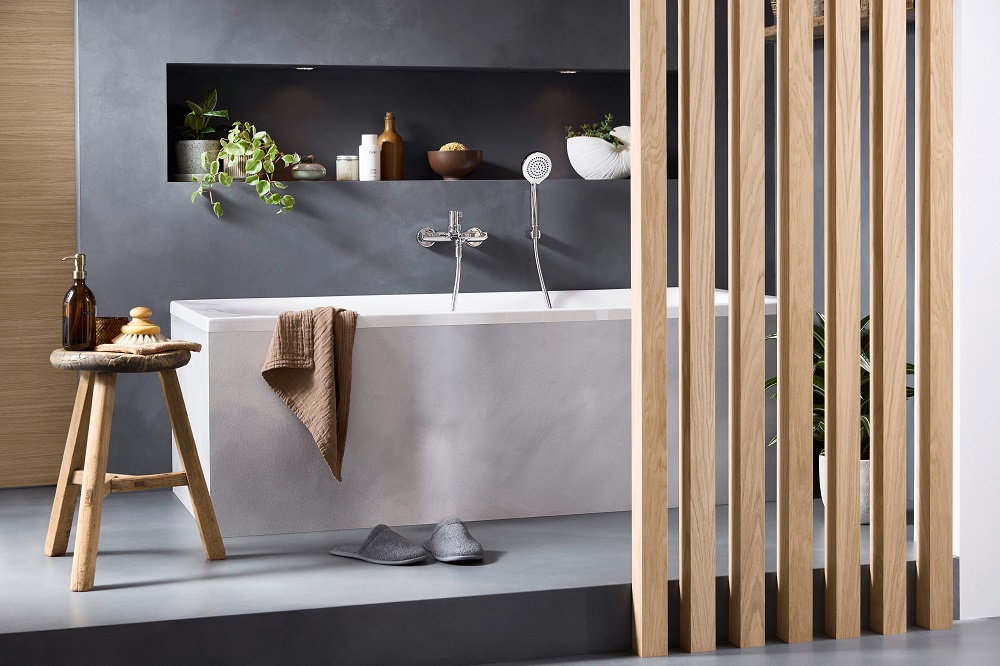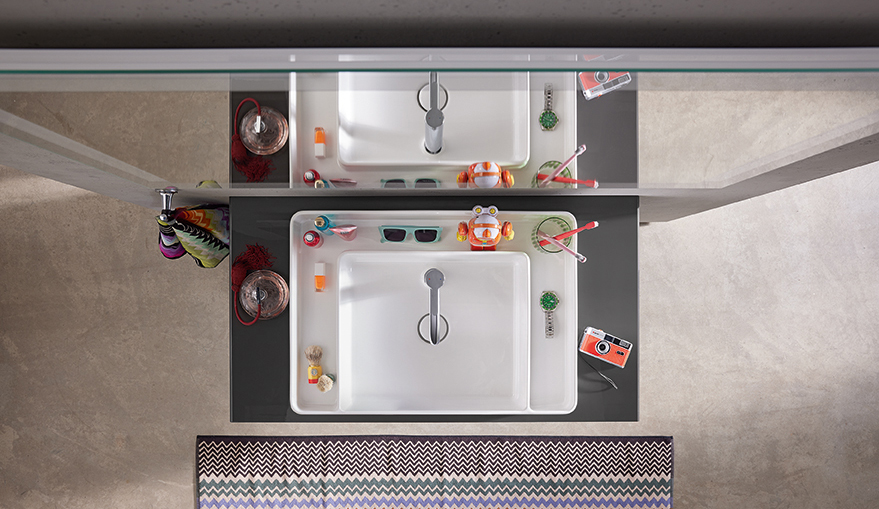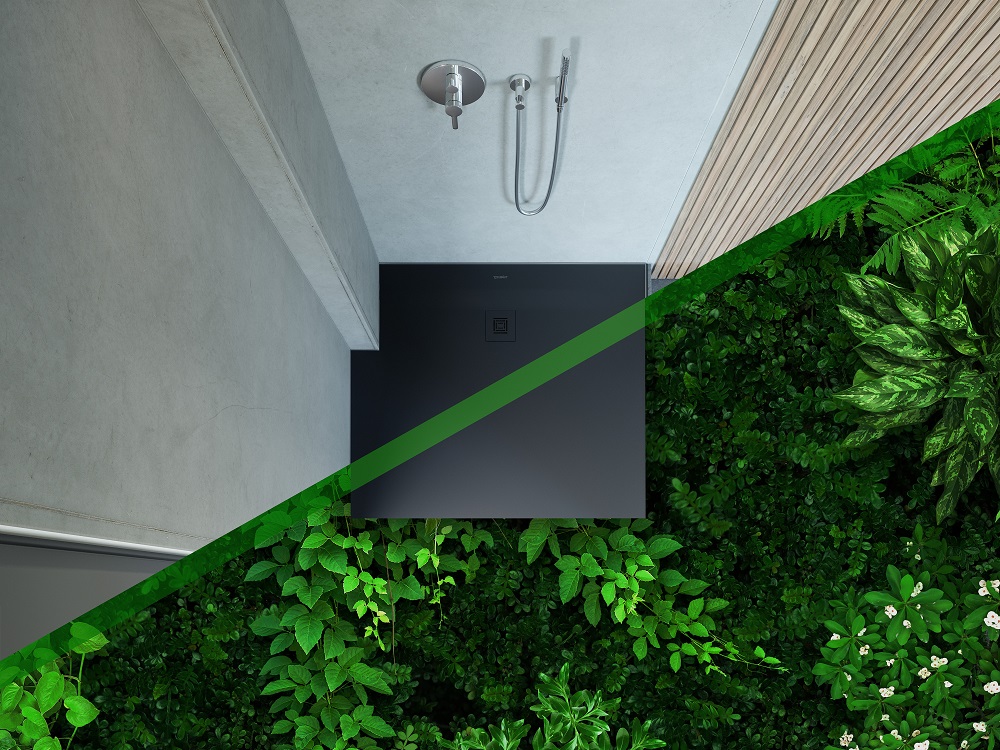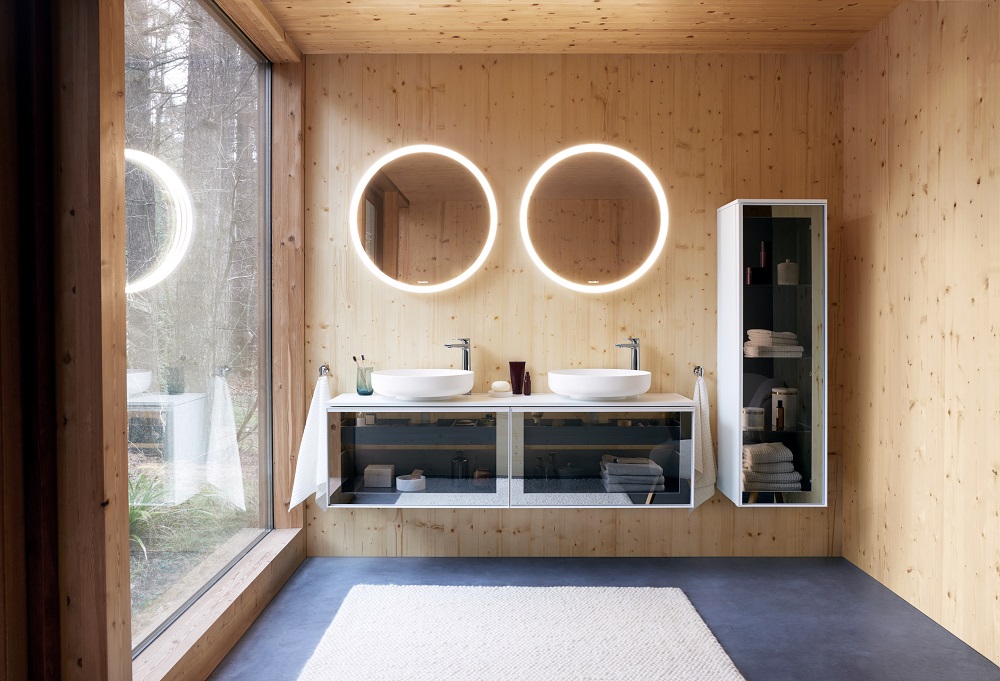The bathroom is no longer merely a place for daily care. It has become a place of refuge from the hustle and bustle of everyday life where you can feel at ease and unwind. In a similar way, kitchens have converged with the living room, the bathroom is now becoming one with the bedroom. In this feature, Duravit explains how to maximise this trend.
Room boundaries are becoming more fluid, with for example the washing area and bathtub located in the centre of the bedroom, and only the toilet being physically separated.
Floating spaces work because sanitary objects are now designed and installed like furniture – as decorative standalone features made from natural materials such as ceramics, wood, and natural stone with a look and feel that creates a sense of sanctuary.
The bathroom as a living area

Contemporary bathrooms are being designed in an increasingly homely style, not just sanitary objects and bathroom furniture, but furnishings, lamps, textiles, and accessories are increasingly finding their way into this corner of the home.
Forms and materials combine with calming neutral tones to create a relaxed ambience – this is enhanced with plants that accentuate the space and ensure a pleasant room climate. Inspiration from nature in interior design are hallmarks of Scandinavian design and Japanese aesthetics. The Zencha bathroom collection from Duravit brings these two concepts into harmony. Designer Sebastian Herkner crafted sanitary objects and bathroom furniture from natural materials such as ceramics, wood, and textured glass.

Light also influences our wellbeing and creates a positive mood in a room. With the new Vitrium for Duravit collection, designer Christian Werner shows how well-placed illumination can transform the bathroom into a genuine living space. Back-lit, translucent fronts made from PARSOL glass lend the furniture a light, almost floating impression, bring warmth into the interior, and invoke memories of an open fire.

Natural lifestyle
Inspiration from nature is a trend that is here to stay in interior design. As a material, wood has surfaces that are appealing to the touch as well as aesthetic and tactile qualities that make it suited to a natural furnishing style like almost no other material. Wood is an established feature of the bathroom. For example, the fronts of the console vanity units in the Vitrium by Christian Werner bathroom range are available in wood as well as glass panels and a range of décor finishes.
In D-Neo,
Belgian designer Bertrand Lejoly created a complete bathroom range that offers no-fuss vanity units and semi-tall cabinets in a range of oak and walnut furniture finishes.
Whilst stone is undergoing a renaissance as a natural material. The striking marbling, fascinating inclusions, tactile surfaces, and countless colour nuances of granite, quartzite, and marble exude a unique aura. Duravit is offering natural stone for the first time as part of the new Qatego collection from Studio F. A. Porsche. The designers have combined ceramic above-counter basins with solid stone panels made from Carrara marble, ravertine, and Pietra Lavica, which can be mounted on the wall or as a console unit. Each of the natural stone panels used is a unique piece, which is expressed through the varied shimmering colours and veining.
The aesthetic benefits such as tactile surfaces and an attractive patina, and the durability of natural stone makes it suited to everyday bathroom use.
Small and tasteful

Increasing numbers of manufacturers now offer not only sanitary objects but also furniture in smaller sizes so even bathrooms with compact measurements can easily be transformed into living spaces.
Bathrooms in large cities are often only a few square meters in size and the Vitrium range from Duravit is ideal for small rooms. Its most striking design feature is the reduced furniture depth just 42 or 48 centimeters, with the round above-counter basin slightly protruding above the furniture edge.
Such a uniform design language across a range of elements helps create a generous sense of space, Vitrium’s mirrors come in rectangular or round versions or as a mirrored cabinet, this is available as a built-in version.
Storage furniture, mirrored cabinets and washbasins with storage space also play their part in maintaining order in the bathroom. On Bento by Philippe Starck, the clean, clearly structured washing areas with their subdivision of dry and wet areas provides a wide range of individual design options and all personal care products and accessories can be placed within easy reach.
When everything has a place, then visual calm is also ensured. Free surfaces can then accommodate eye-catching decorative pieces such as jewellery boxes, vases, and bowls.
Preserving resources

Thinking and acting in a sustainable manner has always been important at Duravit – especially when it comes to timelessly designed products made from high-quality and durable materials. Duravit offers a range of bathroom solutions that consume less water than conventional ones or are made from sustainable materials.
Sustano is a good example: the first ever recyclable shower tray from the German manufacturer, made from the sustainable mineral material DuroCast Nature, it has a high surface hardness and density, and the shower trays can either be returned to the manufacturer or a local recycling center at the end of their useful life.
The minimalist Tulum faucet range by Philippe Starck is equipped with a FreshStart function that saves energy and water as it only produces cold water to start with, until the handle is deliberately moved from the central position. The flow rate is limited by the MinusFlow function which also helps save this precious resource. In parallel to its existing sustainable product range, Duravit has embedded the goal to be climate-neutral by 2045 in its company targets.
Hygiene in the bathroom
Since the pandemic more attention is paid to hygiene, especially in the bathroom. Thorough cleanliness is ensured with easy-to-clean surfaces such as ceramics or DuroCast Nature, and through design and technical features. The White Tulip toilets from Philippe Starck are equipped with the innovative HygieneFlush technology, which cleans the entire inside of the toilet. HygieneGlaze is a ceramic glaze which ensures that approx. 90 per cent of bacteria (e.g. e. coli bacteria) have been eliminated after just six minutes, rising to approx.
99.9 per cent after 24 hours. Another Philippe Starck creation is the Soleil by Starck bathroom series, whose toilet surprises with a slightly protruding, delicate lid. This special design feature means that the lid is easy to grip without touching the seat or ceramic.


